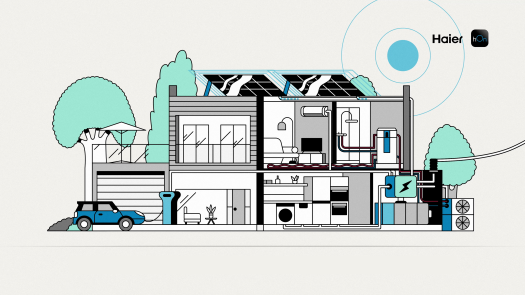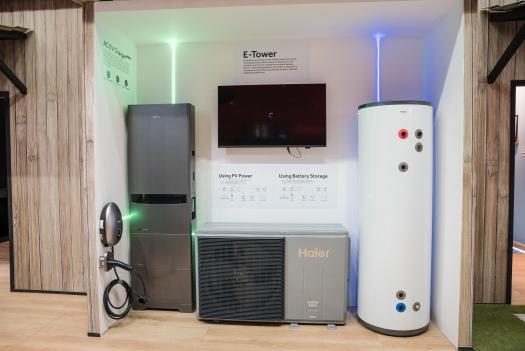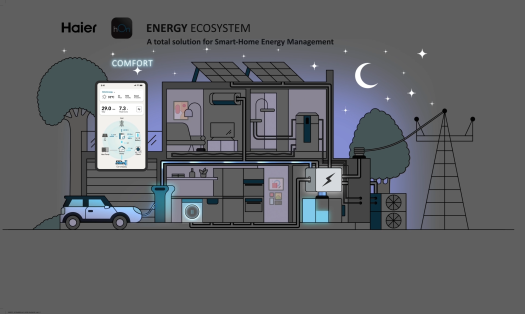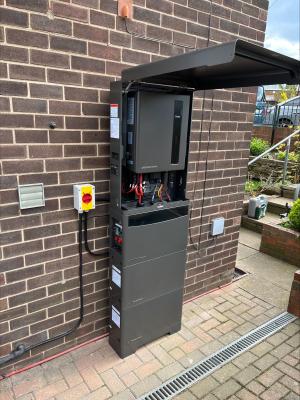Smart Integration: Why Haier Heat Pumps + Solar + Storage is the Future of Home Energy Systems
Smart Integration: Why Haier Heat Pumps + Solar + Storage is the Future of Home Energy Systems

As the energy landscape shifts toward decentralization and decarbonization, installers are increasingly called on to deliver integrated home energy solutions that maximize efficiency, comfort, and sustainability. A powerful combination gaining traction across the industry is the integration of Haier heat pumps with Haier solar PV and Haier battery storage.
This trio not only reduces household carbon emissions but also unlocks smarter energy management, grid independence, and future-ready home performance.
Why Haier Heat Pumps?
Haier’s heat pump systems are engineered with advanced inverter technology, offering high SEER and COP ratings. They’re designed for year-round performance and optimised comfort in a range of climates.
Key specs and features include:
- Inverter-driven compressors for variable-speed efficiency
- Built-in Wi-Fi and app connectivity for remote monitoring and control
- Quiet operation and sleek aesthetics
- Compatibility with Haier Energy smart home solutions.
From a technical integration standpoint, Haier systems are well-suited for load management and automation in homes using renewable energy sources.
The Case for Haier Energy Solar + Storage Integration
1. Daytime Load Matching with PV Output
Heat pumps are one of the largest energy loads in a home, especially during winter. Haier Energy Solar PV systems can offset daytime heating/cooling loads, allowing direct use of self-generated power. With intelligent programming, homeowners can preheat or precool spaces when solar output is highest, reducing battery draw and grid reliance later.

2. Battery Storage for Peak Shaving and Resilience
Haier Energy Storage batteries allow surplus solar generation to be stored and discharged on demand. Haier Heat pumps paired with Haier Energy can:
Operate during peak-rate periods without using grid power
Continue functioning during outages (if backed by sufficient storage capacity)
Contribute to load shifting, a key feature for Virtual Power Plant (VPP) participation or future demand response programs

3. Home Energy Management System hOn Integration
Haier heat pumps with Wi-Fi capabilities can be integrated into HEMS platforms to optimize power flows. Using hOn energy management, installers can configure systems to:
Prioritize solar for heating/cooling loads
Limit export by diverting excess PV into the thermal load
Respond dynamically to time-of-use tariffs

For energy professionals, offering integrated Haier Solutions means:
Higher system value: Customers see tangible ROI through bill reduction and comfort improvements
Eligibility for incentives: Many regions offer rebates for electrification and renewable integration
Future service revenue: Wi-Fi connectivity enables remote diagnostics and predictive maintenance
Design Considerations
When designing these systems:
- Size PV to match seasonal heat pump demand: Undersized systems will limit benefits in winter
- Model thermal loads accurately: Use historical data or modelling tools to size batteries accordingly
- Plan for automation/control: Systems that can respond to solar production in real-time provide the highest efficiency
Final Thoughts

The integration of Haier heat pumps with Haier Energy solar and storage is more than a product bundle—it’s a strategy for delivering smart, resilient, low-emission homes. For installers and consultants, it represents a high-impact opportunity to lead in the electrification of residential heating and cooling.
As energy systems evolve, so must our approach to design. And with Haier’s efficient, connected heat pumps at the centre of an intelligent energy ecosystem, we’re not just installing equipment—we’re shaping the future of home energy.
Written by Jason Devonshire-Mander, Head of HVAC Green Energy. Email address : [email protected]


